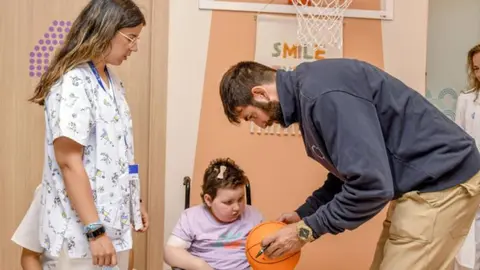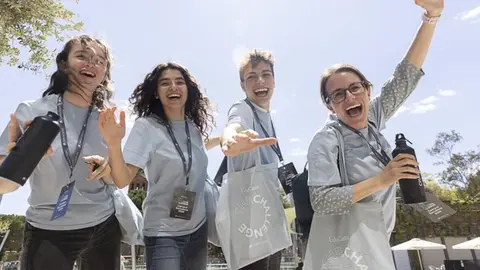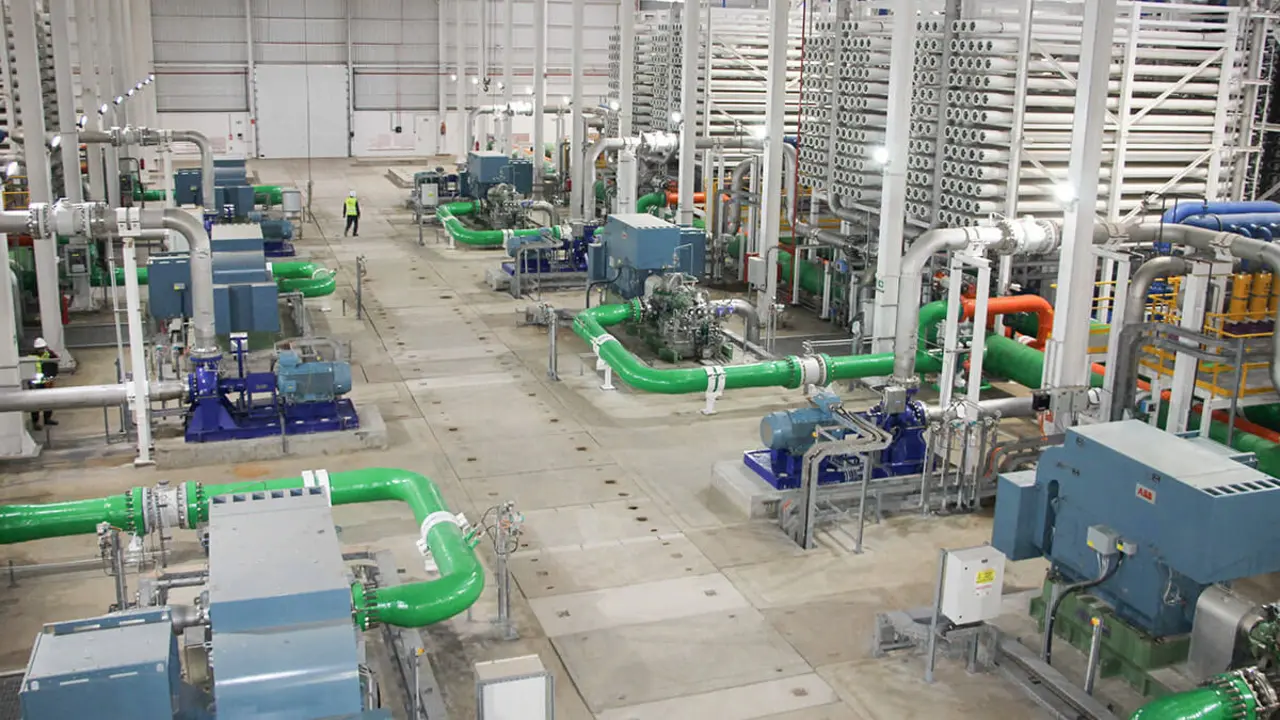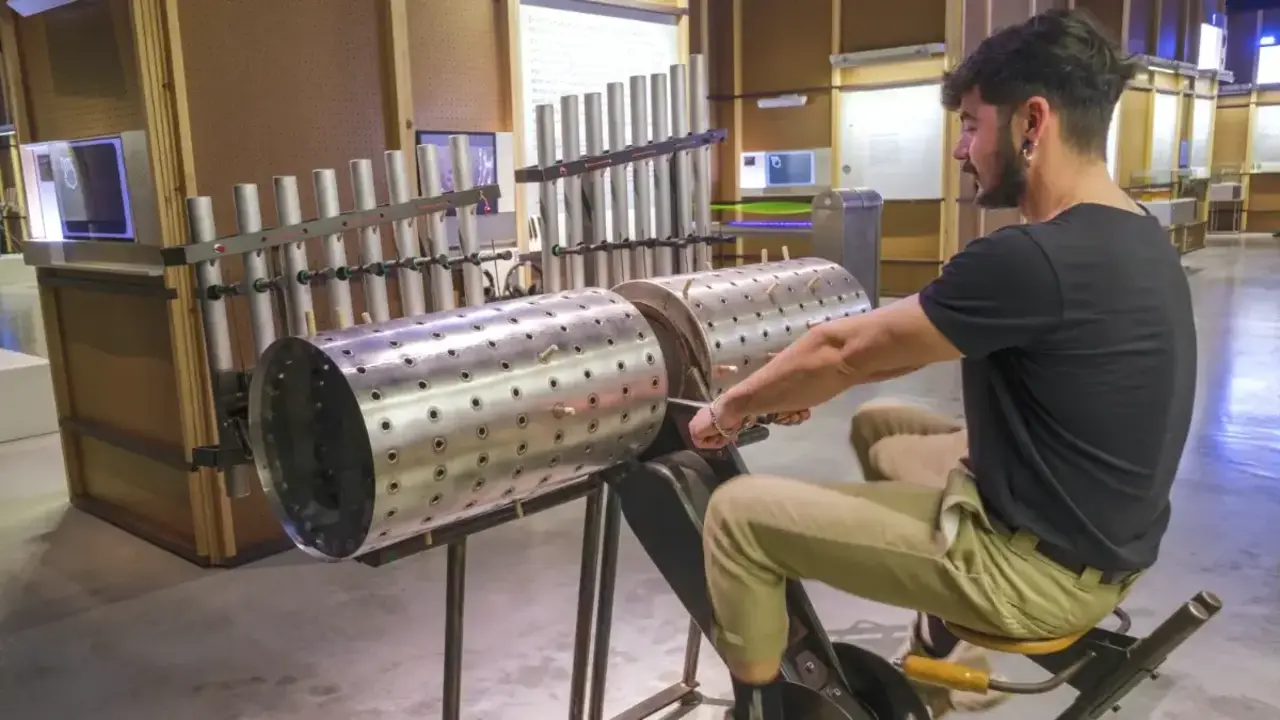Overcoming superbugs, one of the great challenges of this century
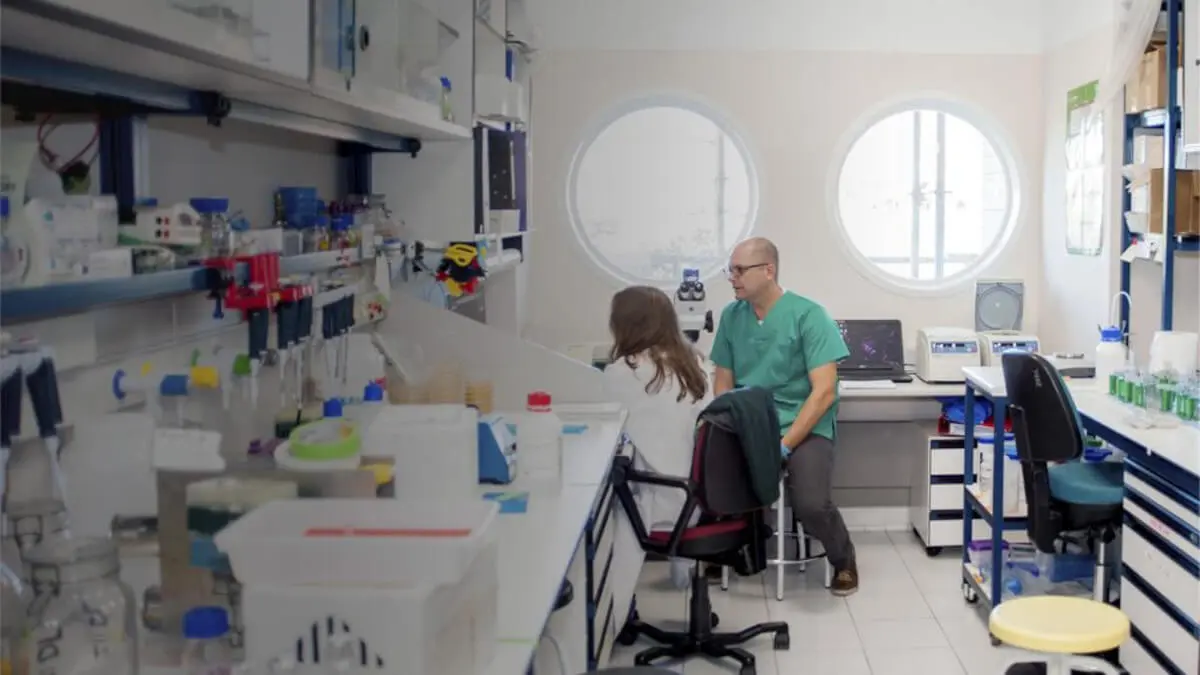
- Deactivating bacterial resistance mechanisms
- A paradigm shift in drug delivery
- Next-generation antimicrobials to reduce bacterial virulence without killing bacteria
- A vaccine to prevent Klebsiella pneumoniae infections
- Responsible use of antibiotics is crucial
Every year 1.2 million people in the world die from infections caused by antibiotic-resistant bacteria. According to the WHO, the ability of bacteria to adapt and resist the drugs designed to fight them is already one of the greatest threats to global public health. If left unchecked, antimicrobial resistance could lead to up to 10 million deaths worldwide by 2050. Four research projects funded by the CaixaResearch Health Research and CaixaImpulse Health Innovation 2023 calls seek to tackle this great challenge to humanity with very different approaches.
Deactivating bacterial resistance mechanisms
When Daniel López Serrano, a biochemist at the National Biotechnology Centre of the Spanish National Research Council, started doing basic science in a laboratory in the early 2000s and requested samples from hospitals, he found only one superbug among the 20 samples he received. Today, it is not uncommon for all 20 samples to contain antibiotic-resistant bacteria. That is why discovering a new effective antibiotic is a major challenge for the pharmaceutical industry. ‘Research can go on for decades with no guarantee of results, and drug resistance is appearing faster and faster, which discourages investment in research and development of new antimicrobials,’ explains López Serrano.
The project led by this researcher aims to restore the efficacy of antibiotics that have stopped working due to the increase in resistant bacteria. In 2010, his team discovered a cellular process that is essential for the survival of bacteria during infections. He explains: ‘This mechanism is responsible for stabilising and assembling the protein machinery in bacteria, including the machinery responsible for antibiotic resistance. Over the years we have been working to understand this mechanism and have been able to design treatments that inhibit it. In this way, we have been able to prevent all these mechanisms from being assembled. In this situation, the administration of classical antibiotics works because the bacteria have deactivated their resistance mechanisms.
According to López Serrano, the great advantage of this project, which has received a grant of 494,300 euros from the CaixaResearch Health Research 2023 call for proposals, is precisely that it proposes a treatment capable of curing infections that could not be cured, and it does so by reactivating commercially available antibiotics.
‘What we have discovered is not a molecule, it is a mechanism, so the most direct way to implement it will probably be to develop it as a process or hospital therapy, rather than commercialise it,’ argues the researcher. ‘So far we have designed the procedure for a couple of bacterial species and we are going to try to expand that knowledge to other species, the most frequent in hospitals, to create a treatment that is universal’.
A paradigm shift in drug delivery
When a new antibiotic is developed, it can happen that, although it has the capacity to attack the bacteria, it does not manage to cross the bacterial membrane. Current strategies to facilitate this membrane crossing have not been fully effective. The project led by Javier Montenegro, a chemist at the Centro Singular de Investigación en Química Biológica y Materiales Moleculares (CiQUS) at the University of Santiago de Compostela, in collaboration with Mariana Pinho, from the Universidade Nova de Lisboa, uses a new approach to transport antibiotics into bacteria that has great potential to enable the use of existing antibiotics in strains that are resistant or have limited permeability.
‘This is a very complex challenge, as it is not easy to cross the membrane of bacteria, especially gram-negative bacteria, which have an outer membrane that is an additional barrier,’ explains Montenegro. In many cases, current approaches ‘use lipids to cross membranes formed by other lipids’, which requires ‘encapsulation of the molecules and this can affect both their stability and the release of the antibiotic at the right time’, he adds.
However, Montenegro and Pinho's team has discovered a property of boron clusters that allows hydrophilic molecules - molecules that dissolve in water - to pass through lipid membranes. For Montenegro, this major scientific milestone, which has received 984,050 euros from the CaixaResearch Health Research 2023 call, represents ‘a complete paradigm shift for science and drug delivery. It is very novel research and completely different from the established dogma. We now need to understand the basis of this mechanism in order to apply it to antibiotic transport.

Next-generation antimicrobials to reduce bacterial virulence without killing bacteria
Although antibiotics can kill micro-organisms, paradoxically they also contribute to the emergence of resistant bacteria and facilitate their proliferation in an environment free of competitors. Moreover, antibiotic development is currently at a standstill.
For this reason, some research projects are focusing on developing alternative therapeutic strategies to deactivate the virulence of superbugs and resensitise them to antibiotics, while preserving the microbiota, our body's natural bacterial community, which can be disrupted by routine antibiotic treatments. This delicate ecosystem plays an essential role in our intestinal, dermatological and mental health, as well as in our immune system, our defences against pathogens, our metabolism and the regulation of our body weight.
The team of Didier Cabanes, a molecular biologist at the Instituto de Investigação e Inovação em Saúde of the Universidade do Porto, studies gram-positive bacteria, such as staphylococci, streptococci and Listeria. In the cell wall of Listeria, he found that ‘some glycopolymers (sugars) present on its surface - which were not determinant for its growth - were crucial not only for the bacterium's resistance to host antimicrobial defences and antibiotics, but also for bacterial pathogenicity’. For this reason, the researchers believe that ‘the enzymes responsible for the presence of these glycopolymers on the bacterial surface are promising targets for antimicrobial drugs against gram-positive pathogens’.
The project, in collaboration with the Fundação para a Ciência e a Tecnologia (FCT), has received a grant of 499,950 euros from the CaixaResearch Health Research 2023 call for proposals. Its ultimate goal is to develop ‘new generation’ antimicrobial drugs that, by inhibiting the glycopolymers present on the surface of superbugs, reduce their virulence without killing them. In this way, they will gradually become susceptible to the host's defences and the action of antibiotics will be enhanced while preserving the microbiota. ‘Our approach is the first to simultaneously disarm and sensitise gram-positive pathogens without affecting their growth,’ concludes Cabanes.

A vaccine to prevent Klebsiella pneumoniae infections
In the latest report from the European Centre for Disease Prevention and Control, Klebsiella pneumoniae was among the top three causes of antibiotic-resistant infections. Specifically, more than 45,000 cases of infection with this bacterium were detected in Europe in 2022, more than 15% of them caused by strains immune to the effect of these drugs. This is why the WHO has classified Klebsiella pneumoniae among the species of critical concern in the health field and why the team led by Mireia López Siles, a microbiologist at the University of Girona, decided to develop a vaccine to continue the fight against this bacterium.
Klebsiella pneumoniae is a bacterium that can be found in any environment. In the hospital environment, it is usually transmitted by contact with the skin, mucous membranes, faeces, wounds or urine of an infected person. The situation is made worse when the strain causing the infection is also resistant to antibiotics. A vaccine could increase the duration of protection against the bacteria compared to antibiotic treatment, provide herd immunity and reduce the mortality associated with these infections. ‘This is key because it would reduce the use of antibiotics to treat infections and the likelihood of more antibiotic-resistant bacteria appearing,’ explains López Siles.
The project, which has received 50,000 euros from the CaixaImpulse call for Innovation in Health (funding that is complemented by support from experts and mentors), is in the pre-clinical phase. Its objective in this phase is to evaluate the in vivo protection capacity of KlebsiGene, a DNA vaccine previously developed by the University of Girona and the Carlos III Health Institute, and to improve its formulation. It includes two main innovations, says the researcher: ‘On the one hand, the vaccine targets parts of the bacterium that have not been used previously in other vaccines and that play a key role in the survival of the bacterium, so we expect it to confer better protection. In addition, we are using a new DNA technology that incorporates elements to stimulate the patient's immune response.
So far, the team led by López Siles has developed eight vaccine prototypes and has found that human cells correctly interpret the information provided by these vaccines. ‘We have also seen, through prediction with bioinformatics tools, that not all vaccine candidates would work equally well to generate an immune response. This has allowed us to prioritise prototypes for efficacy testing with the most promising ones. We have now completed the production phase of two of them. The next step is to demonstrate in a complex organism that our vaccine is able to activate the immune system and protect against infection.
The development of this vaccine ‘will improve the quality of life of people at risk of infection by this microorganism, especially in the hospital setting,’ she adds. Moreover, as it is a DNA vaccine, it is easily adaptable to other pathogens, ‘as it contains a specific DNA fragment that codes for the antigen (the part that will allow the immune response to develop), which in our case is specific to Klebsiella pneumoniae. By exchanging this fragment for a fragment coding for an antigen of any other micro-organism, we would obtain a vaccine targeting that other species. It could also be designed to prevent infection by several pathogens simultaneously, if antigen sequences for both are included’.

Responsible use of antibiotics is crucial
This widespread increase in superbugs ‘is partly natural - bacteria evolve and acquire resistance,’ explains López Serrano, ‘but with our use of antibiotics we have also contributed to creating environments, such as hospitals or animal husbandry (where antibiotics have been widely used not only to treat bacterial infections in animals, but also to promote their growth, as well as to prevent diseases without prior diagnosis), that facilitate this evolutionary process,’ thus causing antibiotics to become ineffective more and more quickly.
For some time now, health authorities have been working on strategies to rationalise the use of antibiotic drugs, including raising public awareness. As Didier Cabanes reminds us, they should be used ‘only when prescribed by a doctor and only when really necessary’. Moreover, ‘treatments must be finished’, adds López Serrano, ‘and should not be stored to take them when we want or give them to our neighbours. Another important thing is the disposal of antibiotics: if we throw leftover antibiotics down the toilet they end up in the environment and the bacteria are there too, so it is very important to dispose of them at the collection points set up in pharmacies. The future of superbugs is also in our hands.

